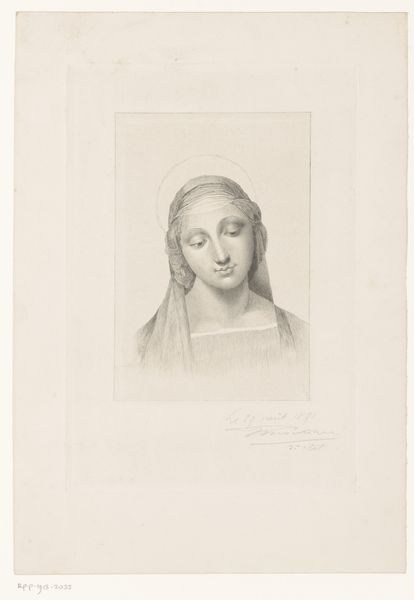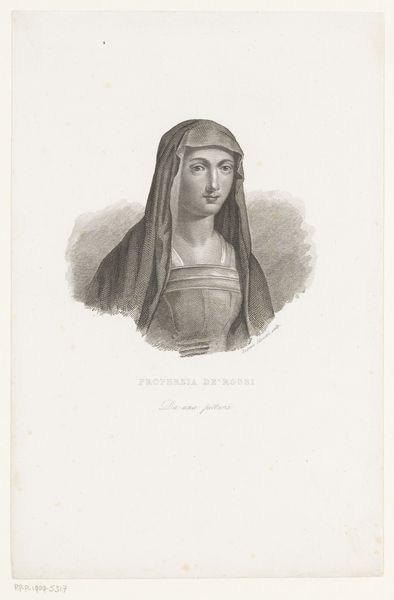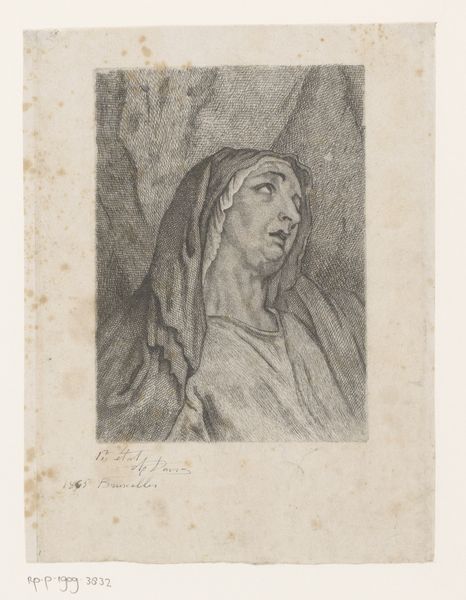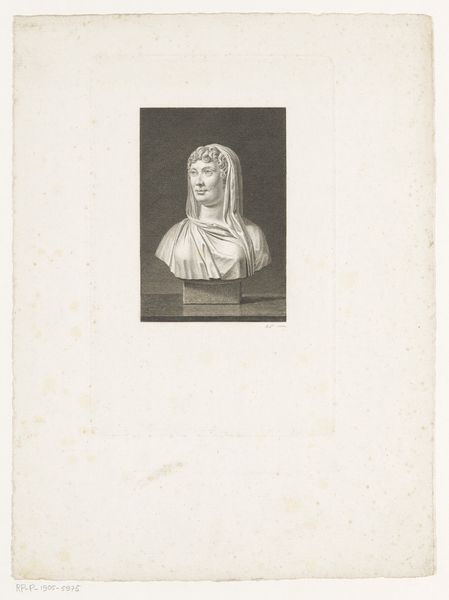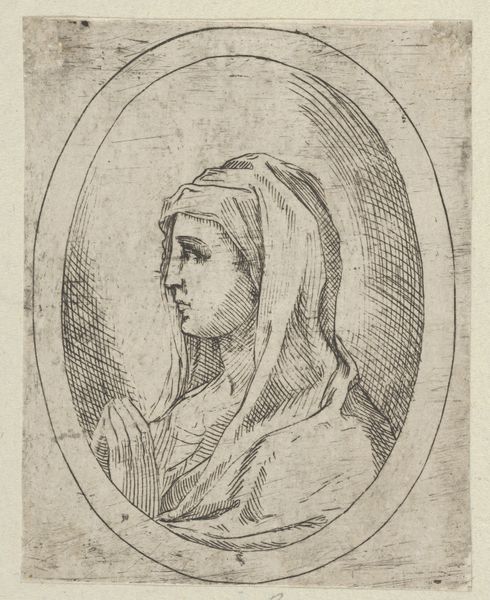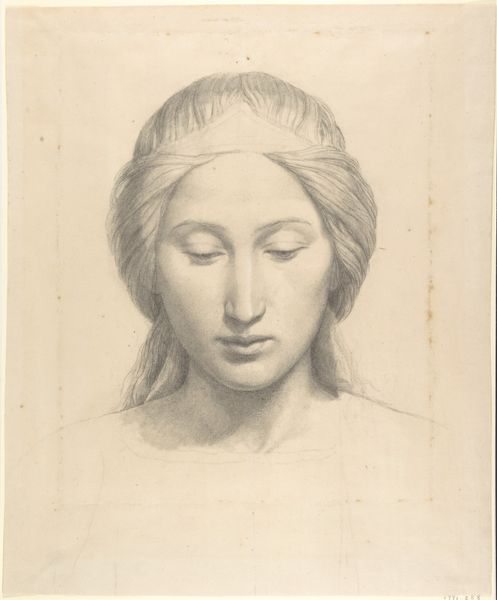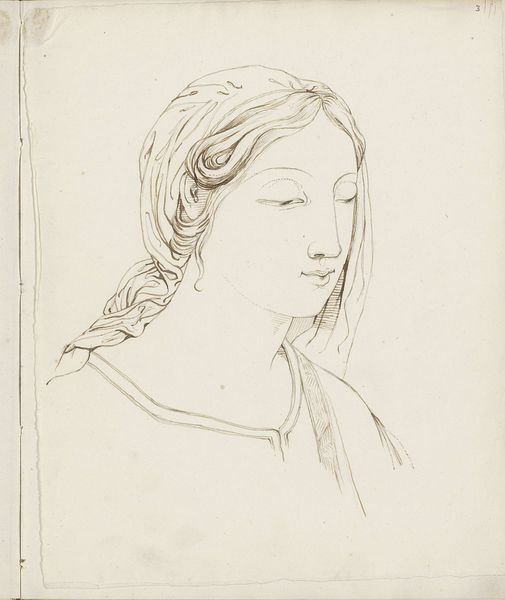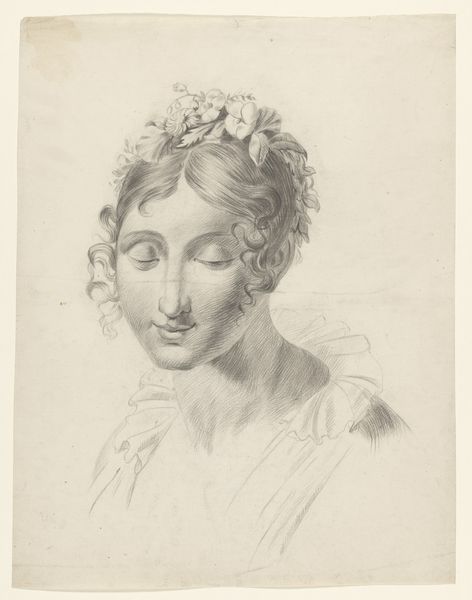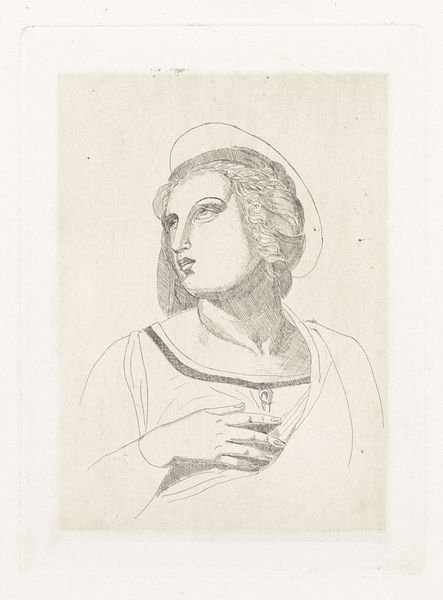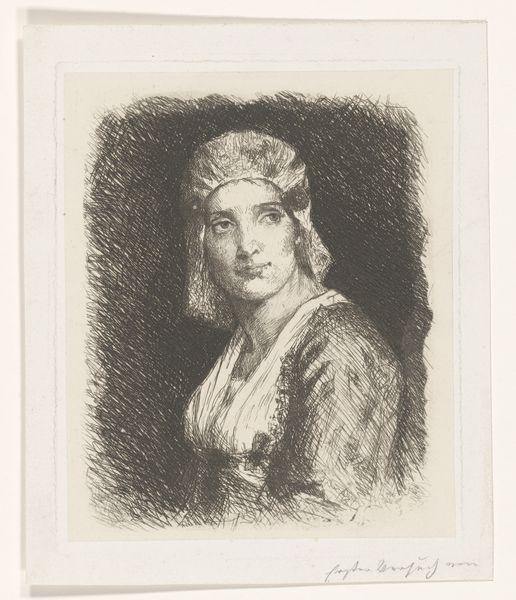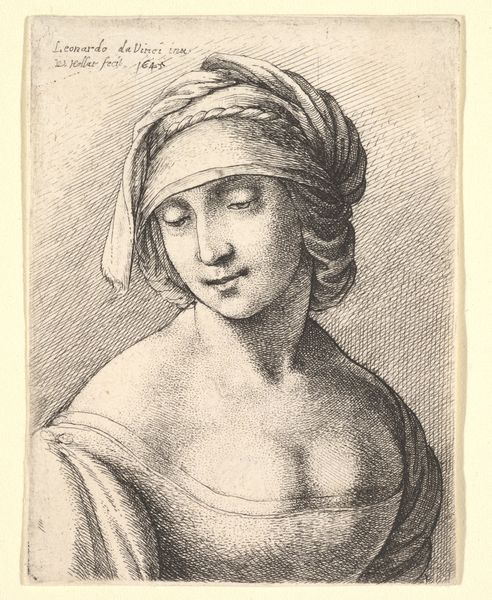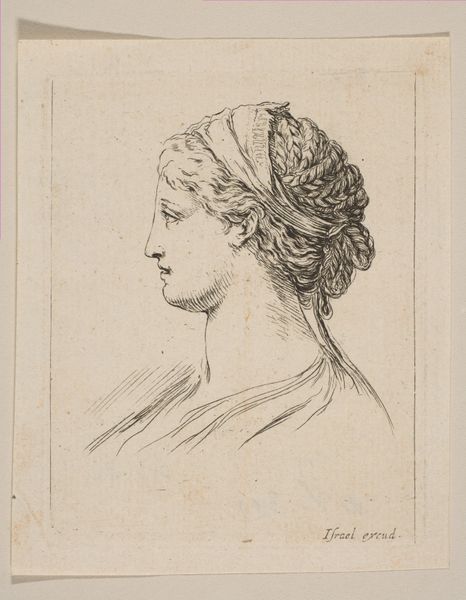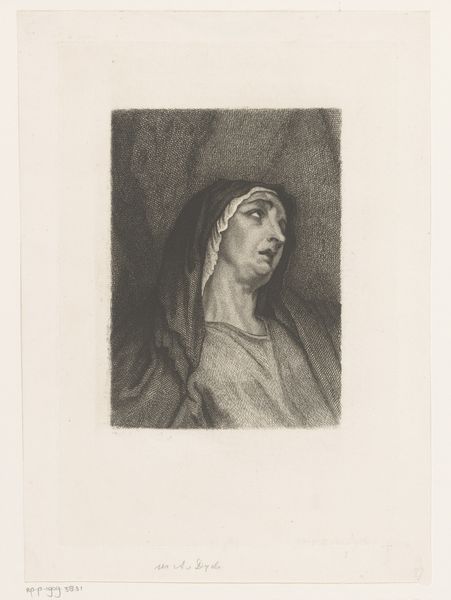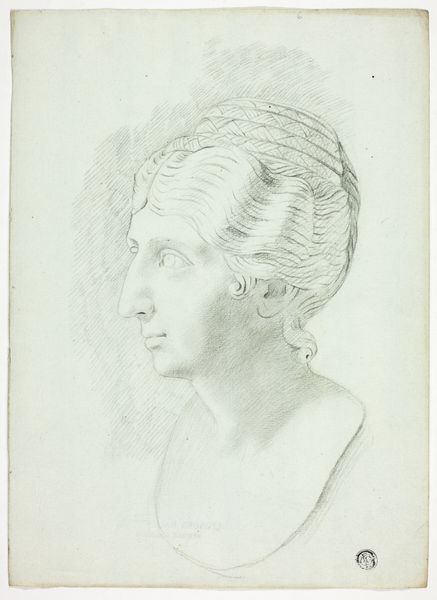
drawing, paper, pencil
#
portrait
#
drawing
#
paper
#
pencil drawing
#
pencil
#
portrait drawing
#
academic-art
#
realism
Dimensions: height 252 mm, width 175 mm
Copyright: Rijks Museum: Open Domain
Curator: Looking at this drawing by Georges Montenez from 1891, entitled "Head of Mary with Nimbus", I’m struck by how powerfully it evokes familiar religious iconography through very simple means. What’s your initial reaction? Editor: Melancholy. There’s a quiet sorrow emanating from her downward gaze, almost as if she’s already aware of what awaits. And the subtle rendering in pencil on paper intensifies that feeling of vulnerability. Curator: Indeed. The use of pencil softens the visual impact and draws us into the emotion. And the halo isn’t overly assertive, either, it’s just a soft glow suggesting divine status, allowing Mary's humanity to take center stage. Think about how effectively symbols often carry complex emotional information, bridging religious doctrine and human experience. Editor: Absolutely. It’s a masterclass in controlled emotion. What I find interesting from a historical perspective is that this was done in 1891. Academic art was waning at this point, and yet Montenez leans into traditional aesthetics, inviting questions about the role of religious art in secularizing societies. Curator: Good point! The drawing's academic style clearly harkens back to Renaissance depictions, creating a sense of timelessness. It's worth thinking about how such imagery reinforced and circulated certain notions of idealized beauty and motherhood during this time. The downward cast eyes have come to carry that feeling. Editor: Yes, there is an appeal to pre-modern forms present here. Consider too, what choices Montenez had. Photography was gaining momentum and yet this highly reproducible medium wasn’t considered ‘art’. By focusing on this, it shows us how important this older visual tradition of drawing, and particularly of religious drawing, was at the end of the 19th Century. Curator: Exactly! So, a piece like this resonates because it accesses and recirculates iconic imagery. And it brings up complex cultural forces swirling about, too. The drawing gives us much to consider about symbolism and how older imagery still felt contemporary in a society becoming thoroughly modern. Editor: Indeed, and its success shows how tradition adapts to and dialogues with the present. Curator: Beautifully said. A small sketch, yet packed with historical and psychological significance.
Comments
No comments
Be the first to comment and join the conversation on the ultimate creative platform.
